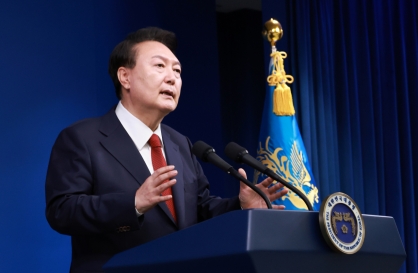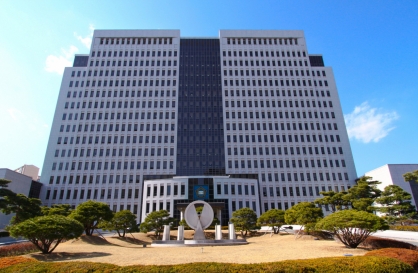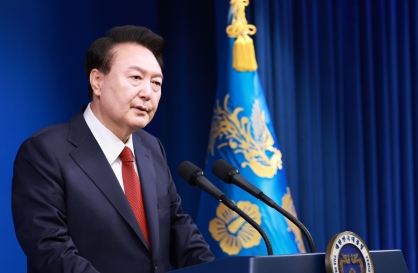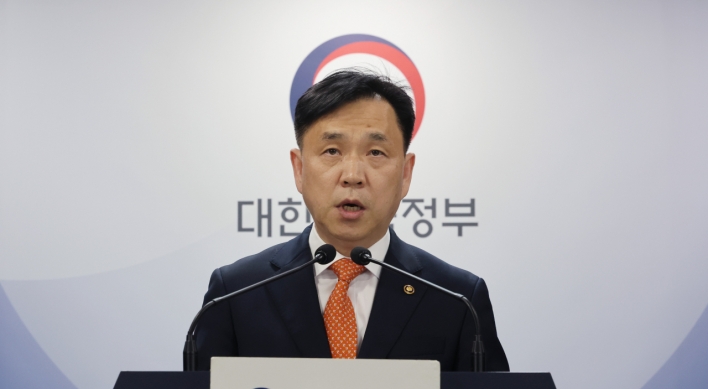Next year is likely to be another tough year for Korean economic policymakers as economic and political uncertainties are likely to mount at home and abroad.
Globally, the eurozone sovereign debt crisis is expected to persist, adding fuel to turbulence in global financial markets and aggravating the vulnerability of the Korean economy.
The year 2012 is also an election year not only in Korea but in many countries, including the United States, Russia, France and Spain. A leadership change is also scheduled in China. Elections tend to increase political instability, which in turn amplifies economic uncertainty.
It is against this backdrop that the Ministry of Strategy and Planning unveiled its economic management plan for 2012 on Monday. Among other things, the ministry sharply lowered its growth estimate to 3.7 percent from the 4.5 percent presented in September.
Officials said the adjustment reflected the rapid deterioration of the global economic outlook since August. Before August, economists talked about exit strategies from the emergency measures that were taken to fight the global financial crisis. Yet the crisis came back with a vengeance.
The ministry’s projection is the same as that offered by the Bank of Korea and slightly higher than the 3.6 percent suggested by the Samsung Economic Research Institute and the LG Economic Research Institute.
This deviates from the norm. In previous years, the ministry’s growth estimates were usually higher than those of the central bank by 0.3-0.5 percentage point. Through the higher growth targets, the government expressed its will to boost economic growth and create more jobs.
The government’s game plan for next year is realistic. In these times of high uncertainty, policymakers need to play it safe. Stability, rather than growth, should be the main tenet of economic policy.
A growth rate of 3.7 percent is obviously too low for the Korean economy, whose potential growth rate is estimated at around 4.3 percent. Yet to attain this level, the government will have to use fiscal stimulus.
Korea’s fiscal position is strong enough to provide stimulus, but if the government does so simply to boost the economy to its potential GDP level, it will have no ammunition left when it is really needed.
The Korean economy faces huge downside risks stemming from eurozone turbulence. Economic growth could slow significantly in the first half of next year, a period when a large volume of government debt comes due for crisis-stricken European countries. If these countries have difficulty refinancing their maturing debts, global financial markets could seize up, dealing a body blow to the global economy.
It is at this time that the government should use fiscal stimulus. In this regard, Finance Minister Bahk Jae-wan suggested that the government would have to create a supplementary budget should the eurozone turmoil boil over.
As the external environment is forecast to worsen, the government cannot pin much hope on exports. The ministry expects exports to account for a mere 0.8 percentage point of the projected 3.7 percent economic growth, with domestic demand taking up the remainder.
To stimulate domestic demand, the ministry plans to frontload 60 percent of next year’s budget in the first half and vitalize service industries. Yet these measures have limits, given the unsustainably high level of household debt.
This year, the government has sought to defuse the ticking debt bomb. But household debt continued to rise, reaching 892.5 trillion won as of September. The figure is expected to surpass 1,000 trillion won in 2013. Next year, the government should redouble efforts to curb the relentless debt growth.
One way to stimulate domestic demand is deregulation. For instance, the government recently eased regulations on housing transactions in Seoul’s prime residential area. This step is expected to boost the sagging housing market in Seoul and give the ailing construction industry a shot in the arm.
Likewise, the government needs to lower entry barriers in the medical sector. It should overcome resistance to allowing private investment in hospitals. This will not only help modernize domestic hospitals but make the medical industry a new growth engine.
In running the economy next year, policymakers need to step up vigilance in the face of potential external shocks. They should navigate the economy prudently based on a hard-nosed analysis of risk factors. As next year is an election year, they should also be wary of politicians who seek to play to their constituents.
Globally, the eurozone sovereign debt crisis is expected to persist, adding fuel to turbulence in global financial markets and aggravating the vulnerability of the Korean economy.
The year 2012 is also an election year not only in Korea but in many countries, including the United States, Russia, France and Spain. A leadership change is also scheduled in China. Elections tend to increase political instability, which in turn amplifies economic uncertainty.
It is against this backdrop that the Ministry of Strategy and Planning unveiled its economic management plan for 2012 on Monday. Among other things, the ministry sharply lowered its growth estimate to 3.7 percent from the 4.5 percent presented in September.
Officials said the adjustment reflected the rapid deterioration of the global economic outlook since August. Before August, economists talked about exit strategies from the emergency measures that were taken to fight the global financial crisis. Yet the crisis came back with a vengeance.
The ministry’s projection is the same as that offered by the Bank of Korea and slightly higher than the 3.6 percent suggested by the Samsung Economic Research Institute and the LG Economic Research Institute.
This deviates from the norm. In previous years, the ministry’s growth estimates were usually higher than those of the central bank by 0.3-0.5 percentage point. Through the higher growth targets, the government expressed its will to boost economic growth and create more jobs.
The government’s game plan for next year is realistic. In these times of high uncertainty, policymakers need to play it safe. Stability, rather than growth, should be the main tenet of economic policy.
A growth rate of 3.7 percent is obviously too low for the Korean economy, whose potential growth rate is estimated at around 4.3 percent. Yet to attain this level, the government will have to use fiscal stimulus.
Korea’s fiscal position is strong enough to provide stimulus, but if the government does so simply to boost the economy to its potential GDP level, it will have no ammunition left when it is really needed.
The Korean economy faces huge downside risks stemming from eurozone turbulence. Economic growth could slow significantly in the first half of next year, a period when a large volume of government debt comes due for crisis-stricken European countries. If these countries have difficulty refinancing their maturing debts, global financial markets could seize up, dealing a body blow to the global economy.
It is at this time that the government should use fiscal stimulus. In this regard, Finance Minister Bahk Jae-wan suggested that the government would have to create a supplementary budget should the eurozone turmoil boil over.
As the external environment is forecast to worsen, the government cannot pin much hope on exports. The ministry expects exports to account for a mere 0.8 percentage point of the projected 3.7 percent economic growth, with domestic demand taking up the remainder.
To stimulate domestic demand, the ministry plans to frontload 60 percent of next year’s budget in the first half and vitalize service industries. Yet these measures have limits, given the unsustainably high level of household debt.
This year, the government has sought to defuse the ticking debt bomb. But household debt continued to rise, reaching 892.5 trillion won as of September. The figure is expected to surpass 1,000 trillion won in 2013. Next year, the government should redouble efforts to curb the relentless debt growth.
One way to stimulate domestic demand is deregulation. For instance, the government recently eased regulations on housing transactions in Seoul’s prime residential area. This step is expected to boost the sagging housing market in Seoul and give the ailing construction industry a shot in the arm.
Likewise, the government needs to lower entry barriers in the medical sector. It should overcome resistance to allowing private investment in hospitals. This will not only help modernize domestic hospitals but make the medical industry a new growth engine.
In running the economy next year, policymakers need to step up vigilance in the face of potential external shocks. They should navigate the economy prudently based on a hard-nosed analysis of risk factors. As next year is an election year, they should also be wary of politicians who seek to play to their constituents.





![[K-pop’s dilemma] Can K-pop break free from ‘fandom’ model?](http://res.heraldm.com/phpwas/restmb_idxmake.php?idx=644&simg=/content/image/2024/05/09/20240509050541_0.jpg&u=20240509173751)




![[News Analysis] Yoon's first 2 years marked by intense confrontations, lack of leadership](http://res.heraldm.com/phpwas/restmb_idxmake.php?idx=644&simg=/content/image/2024/05/09/20240509050612_0.jpg&u=20240509233252)







![[Today’s K-pop] NCT’s Mark to drop 1st solo album in February 2025](http://res.heraldm.com/phpwas/restmb_idxmake.php?idx=642&simg=/content/image/2024/05/10/20240510050597_0.jpg&u=)